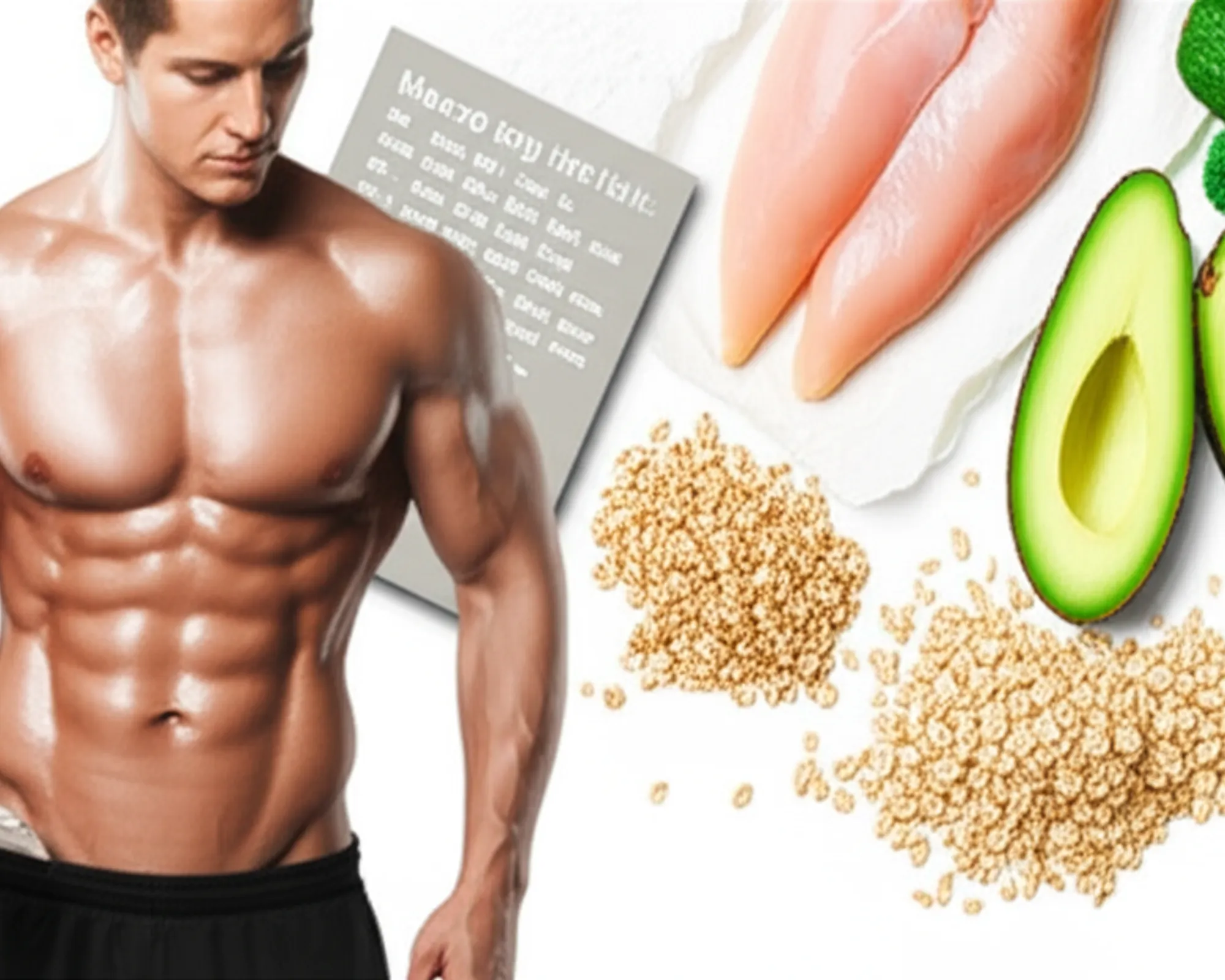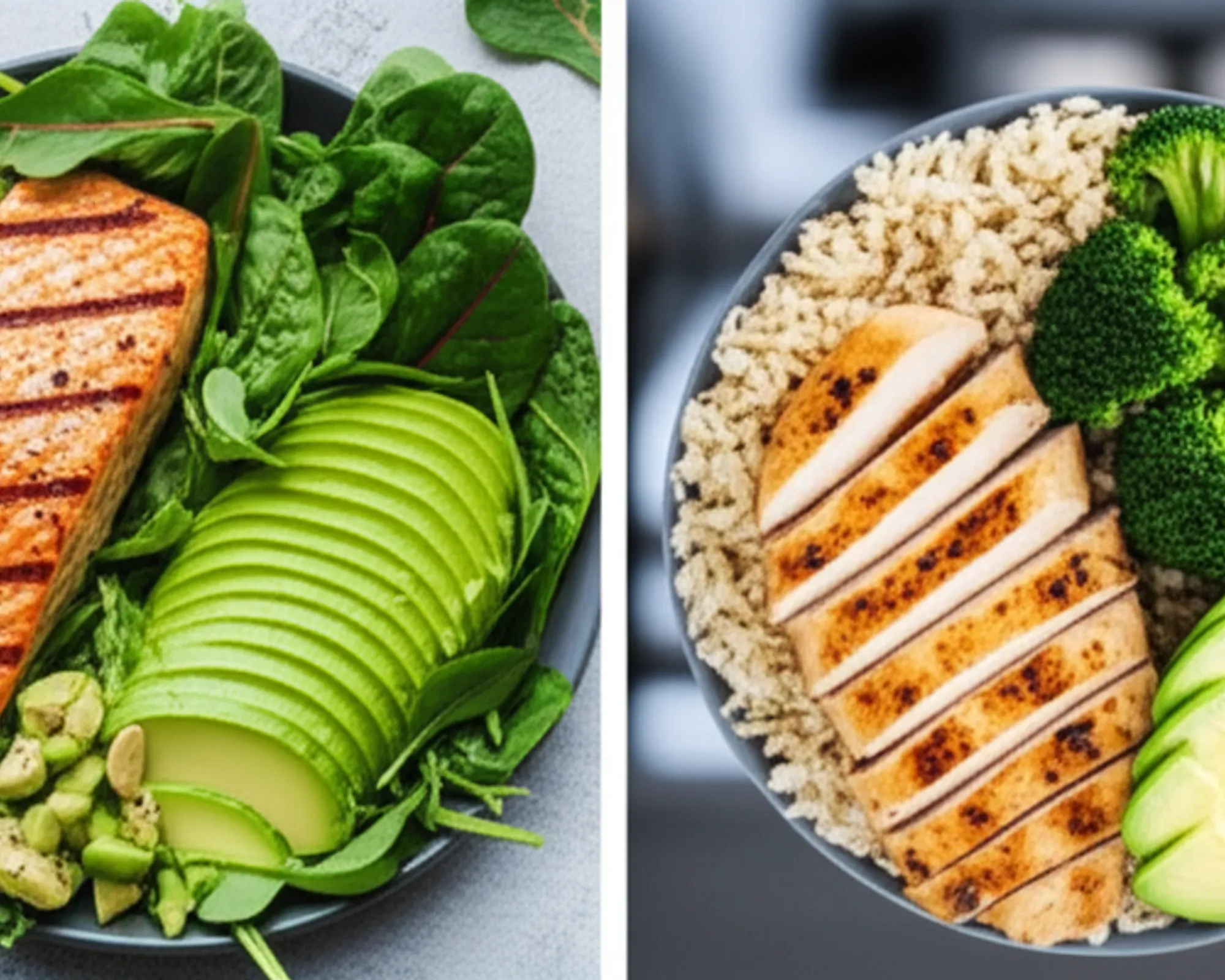Cutting Macros: The Science of Losing Fat Without Losing Muscle

Embarking on a fat loss journey can be a double-edged sword. While the goal is to shed unwanted body fat, the fear of losing hard-earned muscle mass often looms large. The good news? It's entirely possible to achieve a lean, sculpted physique without sacrificing your strength or muscle. The secret lies in understanding and strategically manipulating your cutting macros. This isn't just about eating less; it's about eating smart, leveraging the science of nutrition to preserve muscle while efficiently burning fat. Dive in as we unravel the intricate world of macronutrients and how to master them for your ultimate body recomposition.
The Calorie Deficit: Your Foundation
At its core, fat loss hinges on creating a calorie deficit – consuming fewer calories than your body expends. However, the magnitude and composition of this deficit are crucial. A drastic deficit can lead to rapid weight loss, but often at the expense of muscle tissue. The optimal approach involves a moderate deficit, typically 15-25% below your Total Daily Energy Expenditure (TDEE). This allows for sustainable fat loss, giving your body the best chance to spare muscle. This is where macronutrient partitioning becomes paramount.
Protein: The Muscle Guardian
If there’s one macronutrient that reigns supreme during a cutting phase, it's protein. Protein is the building block of muscle, and a high intake is non-negotiable for muscle preservation. When in a calorie deficit, your body might attempt to break down muscle for energy. Adequate protein intake, especially combined with resistance training, signals to your body to hold onto that muscle. Protein also has a higher thermic effect of food (TEF), meaning your body burns more calories digesting it, and it's incredibly satiating, helping to curb hunger. Aim for 1.6-2.2 grams of protein per kilogram of body weight (or 0.7-1 gram per pound). Prioritize lean sources like chicken breast, turkey, lean beef, fish, eggs, Greek yogurt, and protein supplements.
Carbohydrates: Fueling Performance and Preserving Muscle
Often demonized in fat loss diets, carbohydrates play a vital role in fueling your workouts and preventing muscle breakdown. While in a deficit, your glycogen stores will be lower, but completely eliminating carbs can lead to lethargy, poor workout performance, and increased muscle catabolism. Carbs provide the primary energy source for high-intensity training, essential for stimulating muscle retention. They also support thyroid function and can help manage cortisol. The key is strategic carb intake. Focus on complex carbohydrates such as oats, brown rice, quinoa, sweet potatoes, whole-wheat bread, and plenty of fibrous vegetables. Timing your carbs around your workouts can be beneficial, providing energy for training and aiding recovery. Your carb intake will largely depend on your activity level and the remaining calorie budget after protein and fats are set.
Fats: Hormonal Health and Satiety
Despite being calorie-dense, dietary fats are indispensable, especially during a cutting phase. Healthy fats are crucial for hormone production, including testosterone, which plays a significant role in muscle maintenance and fat loss. They also aid in the absorption of fat-soluble vitamins (A, D, E, K) and contribute significantly to satiety, helping you feel fuller for longer and preventing cravings. Undereating fats can lead to hormonal imbalances, fatigue, and nutrient deficiencies. Prioritize healthy unsaturated fats found in avocados, nuts, seeds, olive oil, and fatty fish like salmon. Aim for 0.5-1 gram of fat per kilogram of body weight (or 0.2-0.45 grams per pound of body weight), ensuring at least 20-30% of your total daily calories come from fats to support optimal health and hormone function.
Calculating Your Cutting Macros
To put this into practice, you’ll need to calculate your personalized macro targets:
- Determine your TDEE: Use an online calculator to estimate your daily calorie burn.
- Create a Deficit: Subtract 15-25% from your TDEE for your target calorie intake.
- Set Protein: Allocate 1.6-2.2g/kg (0.7-1g/lb) of body weight. (Multiply by 4 calories/gram)
- Set Fats: Allocate 0.5-1g/kg (0.2-0.45g/lb) of body weight. (Multiply by 9 calories/gram)
- Calculate Carbs: Subtract your protein and fat calories from your total target calorie intake. Divide the remaining calories by 4 calories/gram to get your carb target.
Remember, these are starting points. Monitor your progress (weight, measurements, how you feel) and adjust your macros every 1-2 weeks as needed.
Beyond Macros: Practical Tips for Success
Beyond the numbers, several practical strategies will bolster your cutting success:
- Resistance Training: Continue lifting weights intensely. This sends a powerful signal to your body to retain muscle.
- Hydration: Drink plenty of water for satiety, metabolism, and overall health.
- Sleep: Prioritize 7-9 hours of quality sleep. Poor sleep elevates cortisol, hindering fat loss and promoting muscle breakdown.
- Whole Foods: Focus on nutrient-dense, unprocessed foods for essential vitamins, minerals, and satiety.
- Track & Adjust: Use a food tracking app to accurately log intake and be prepared to adjust as your body adapts.
- Patience & Consistency: Fat loss is a marathon. Consistency over time yields the best results.
Avoid pitfalls like too extreme a deficit, insufficient protein, neglecting resistance training, lack of tracking, and ignoring sleep/stress, which can derail your efforts.
Conclusion
Mastering cutting macros is an art and a science, a strategic dance between calorie restriction and nutrient partitioning. By prioritizing protein, strategically incorporating healthy fats and complex carbohydrates, maintaining an appropriate calorie deficit, and coupling it with consistent resistance training, you can effectively strip away body fat while safeguarding your hard-earned muscle. This approach not only delivers superior aesthetic results but also promotes better health and sustainable habits. Embrace the science, stay consistent, and watch your body transform into the lean, strong physique you've worked so hard for.


